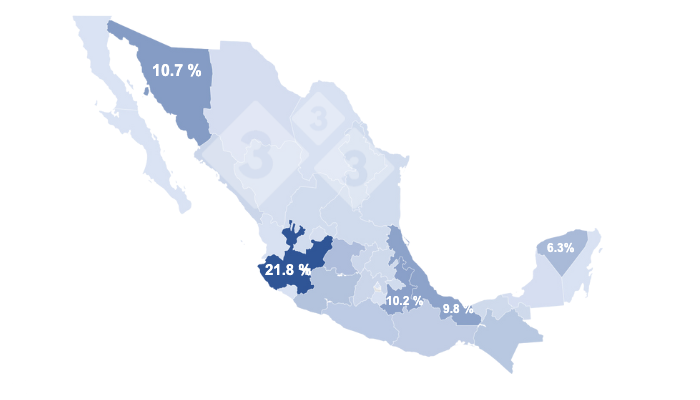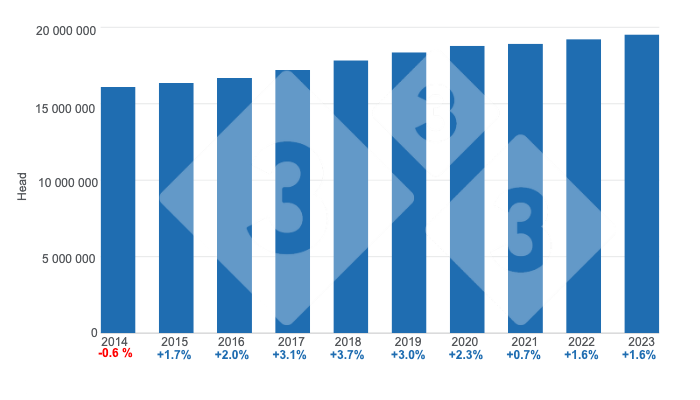The estimated swine inventory in 2023 stood at 19,532,854 head, an increase of 1.6% compared to 2022.
The states of Jalisco and Yucatán grew the most last year, with rates close to 3%, while Veracruz, Michoacán, and Puebla increased their swine inventories by around 2%.

Just five states accounted for 60% of the pig inventory in 2023: Jalisco (21.8%), Sonora (10.7%), Puebla (10.2%), Veracruz (9.8%), and Yucatán (6.3%).

Concentration of swine inventory and participation of the 5 main producing states. Prepared by 333 Latin America with Agri-food and Fisheries Information Service (SIAP) data.
In the last 10 years, the Mexican swine inventory has grown by 21.3%, with almost 3.5 million additional heads compared to 2014. The average year-on-year growth rate was 1.9%.

Evolution of total swine inventory, annual percentage changes. Prepared by 333 Latin America with Agri-food and Fisheries Information Service (SIAP) data.
333 Latin America with Agri-food and Fisheries Information Service (SIAP) data/ Mexico.
https://www.gob.mx/siap




